A few posts ago I presented a puzzle – what were the strange arthropod-like creatures I found in a KOH-dissolved slurry of eastern gray squirrel skin? I canvassed colleagues from around the world, and none had a definitive answer (though Terry Galloway from the University of Manitoba guessed the correct order, or suborder depending on your taxonomy). Yesterday I received a second square of skin from the same squirrel, also sent by Jamie Rothenburger. This time I didn’t dissolve it in KOH but rather just plopped it in ethanol and examined it underneath a dissecting scope. Lo! Dozens of the tiny mystery animals were attached to the squirrel’s hairs. Even better, four older instars, including an adult, were also present. So, what did they turn out to be? Sucking lice (Anoplura), most likely Enderleinellus longiceps Kellogg & Ferris based on papers by Kim (1996 a, b). UPDATE: no, it is not E. longiceps, it doesn’t even belong to that genus. I keyed out the adult female today and she turned out to be Neohaematopinus sciuri Jancke based on Kim et al. (1986). I was a bit too eager to get photos of the critters and didn’t wait until the slides were completely cured, so the images below are a little blurry. First are photos of embryonic lice still in eggs, then photos of what I think is a second nymphal instar. The scalloped structure beneath the tarsal claw that was particularly obvious on the legs of the animals in the original post are less striking in the nymph.

Two eggs on a squirrel hair, one occupied.
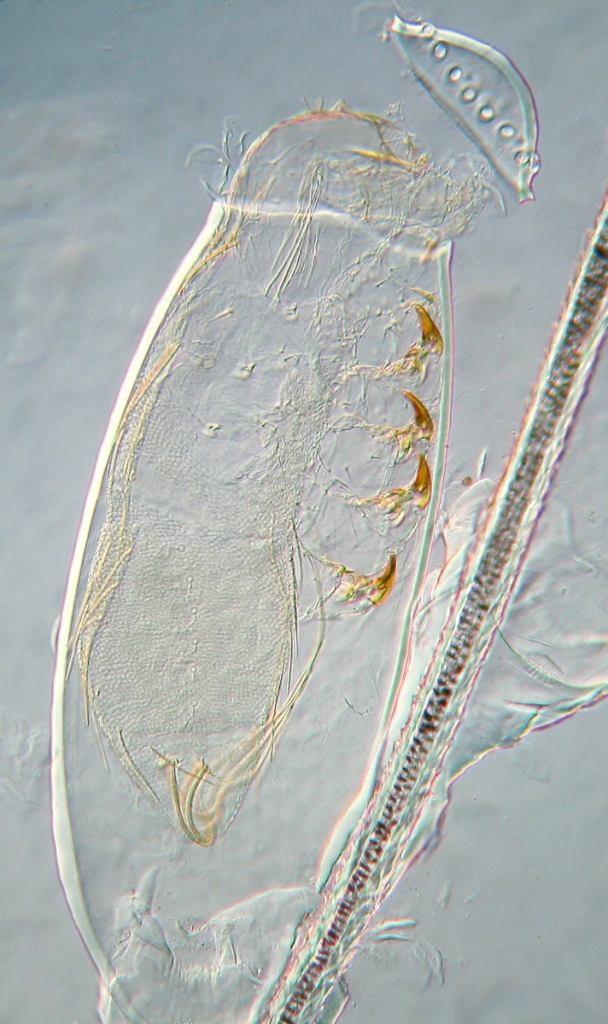
Close-up of one embryo popping out of the egg.
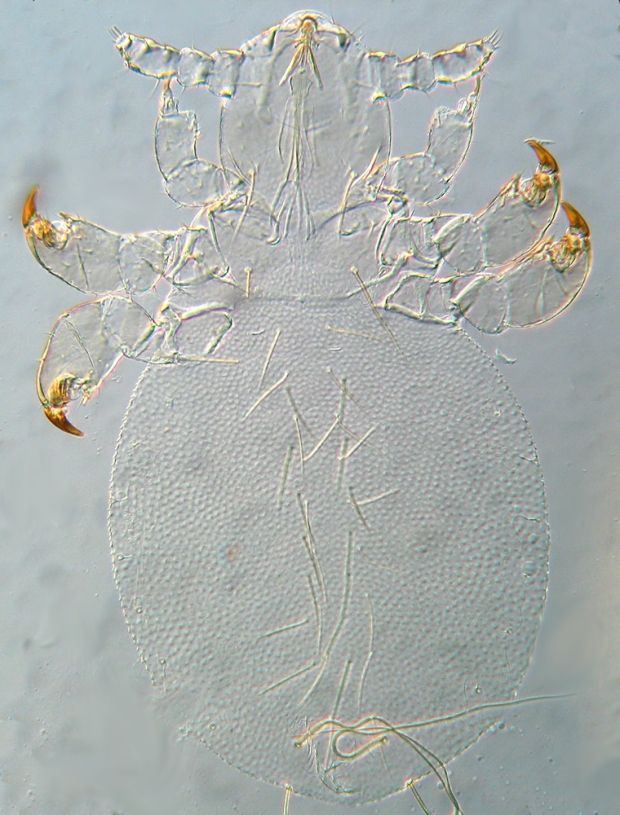
Nymphal sucking louse, Neohaematopinus sciuri.
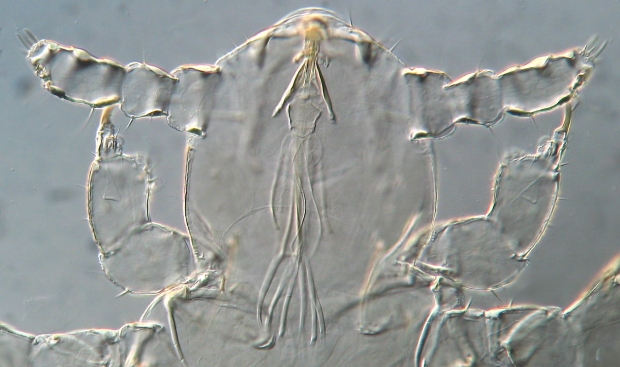
Internal mouthparts of the nymph.
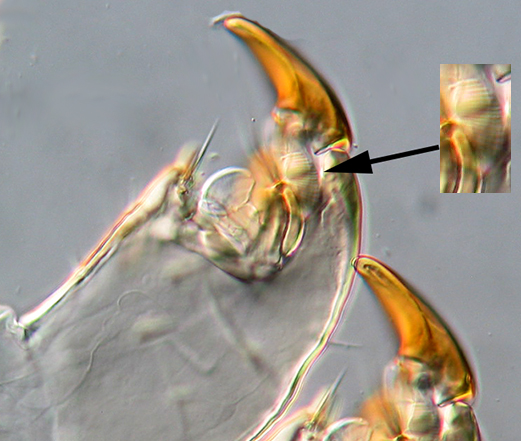
Tarsus of second leg showing faint scalloped structure.
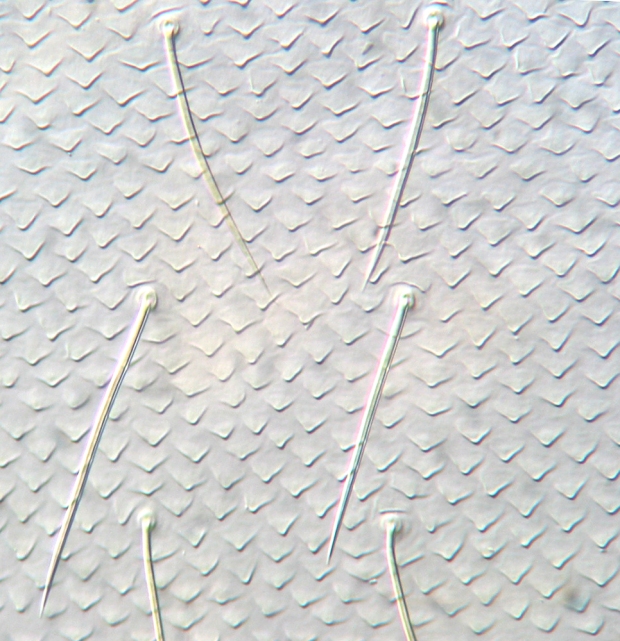
A nice scaly patch of integument from the dorsum of the nymph.

Adult female Neohaematopinus sciuri.

Relative sizes of tarsal claws of legs I to III and shape of the sternal sclerite (arrow) helped to identify the female as belonging to the family Polyplacidae and the genus Neohaematopinus.
References
Kim, K.C. 1966. The species of Enderleinellus (Anoplura, Hoplopleuridae) parasitic on the Sciurini and Tamiasciurini. J. Parasitol. 52: 988-1024
Kim, K.C. 1966 The nymphal stages of three North American species of the genu Enderleinellus Fahrenholz (Anoplura: Hoplopleuridae). J. Med. Ent. 2: 327-330.
Kim, K.C., H.D. Pratt and C.J. Stojanovich. 1986. The Sucking Lice of North America: an Illustrated Manual for Identification. Pennsylvania State University Press, University Park.
I am glad that yu were able to secure a second sample and took the steps you did to resolve the puzzle no one was able to solve last go around.. Great work
Thanks, Darrel!